Easy Condensed Milk Bread Recipe
This condensed milk bread recipe is so easy to make. The bread is sweet, light and fluffy. It makes a delicious sandwich bread.
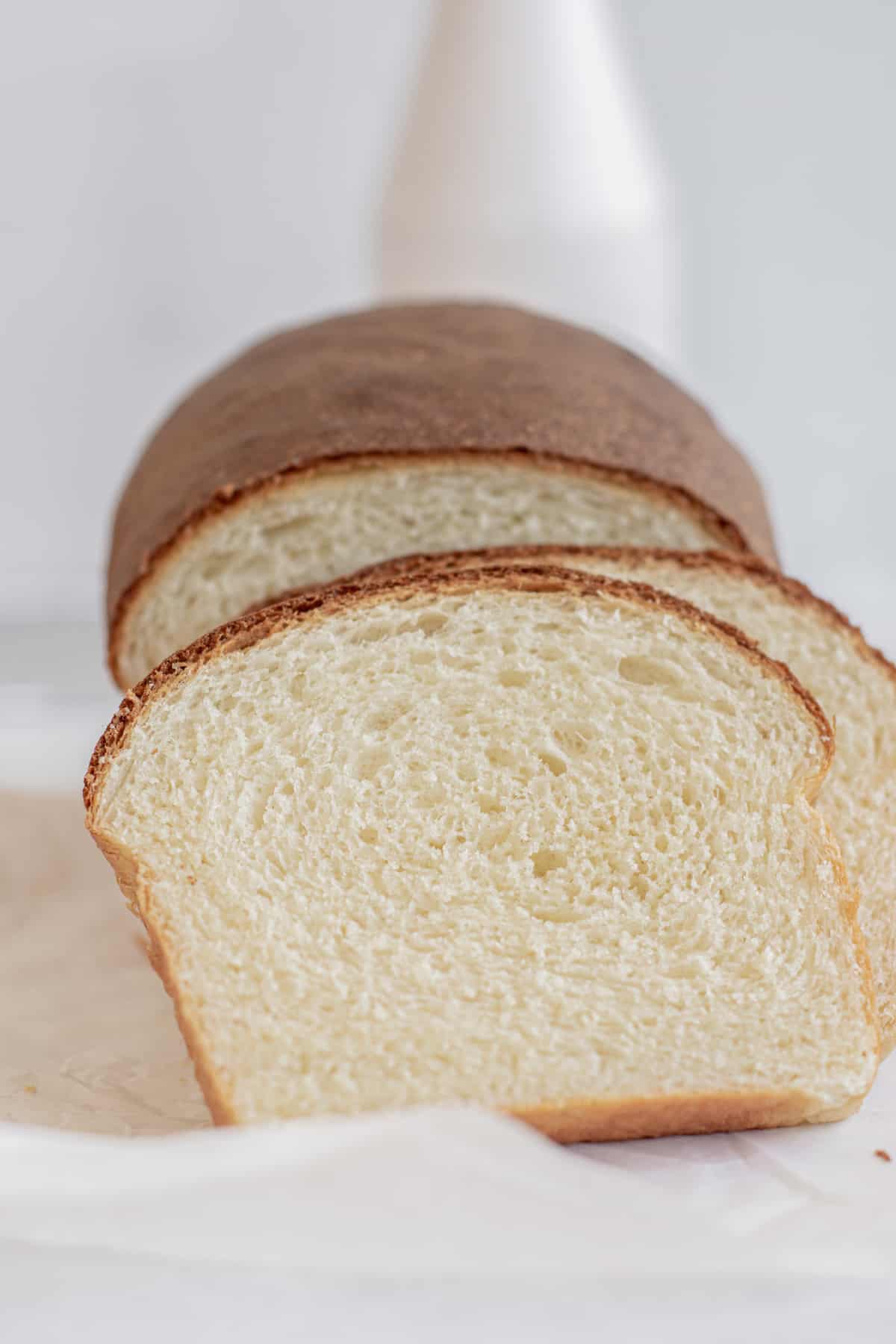
This bread is so delicious and fluffy and one to add to your bread recipes repertoire. Taste-wise it’s almost like brioche, but the texture is more fluffy and light. It’s also a lot easier to make than brioche, with a dough that’s easy to handle by hand or in the mixer.
It’s white bread, that slices perfectly. It has sweetness from the condensed milk, the fluffiest inner and the top is golden brown. Use it for sandwiches, make french toast or bread pudding, or use the dough for eggless cinnamon rolls!
Condensed milk in bread
If you have leftover condensed milk from another recipe, this is the perfect bread to use it up in!
Why add sweetened condensed milk to bread?
The sweetness is one reason, but there’s more to it. Sweetened condensed milk is milk that has been simmered down with sugar until about 60% of the water has been removed. The result is a thick milky syrup.
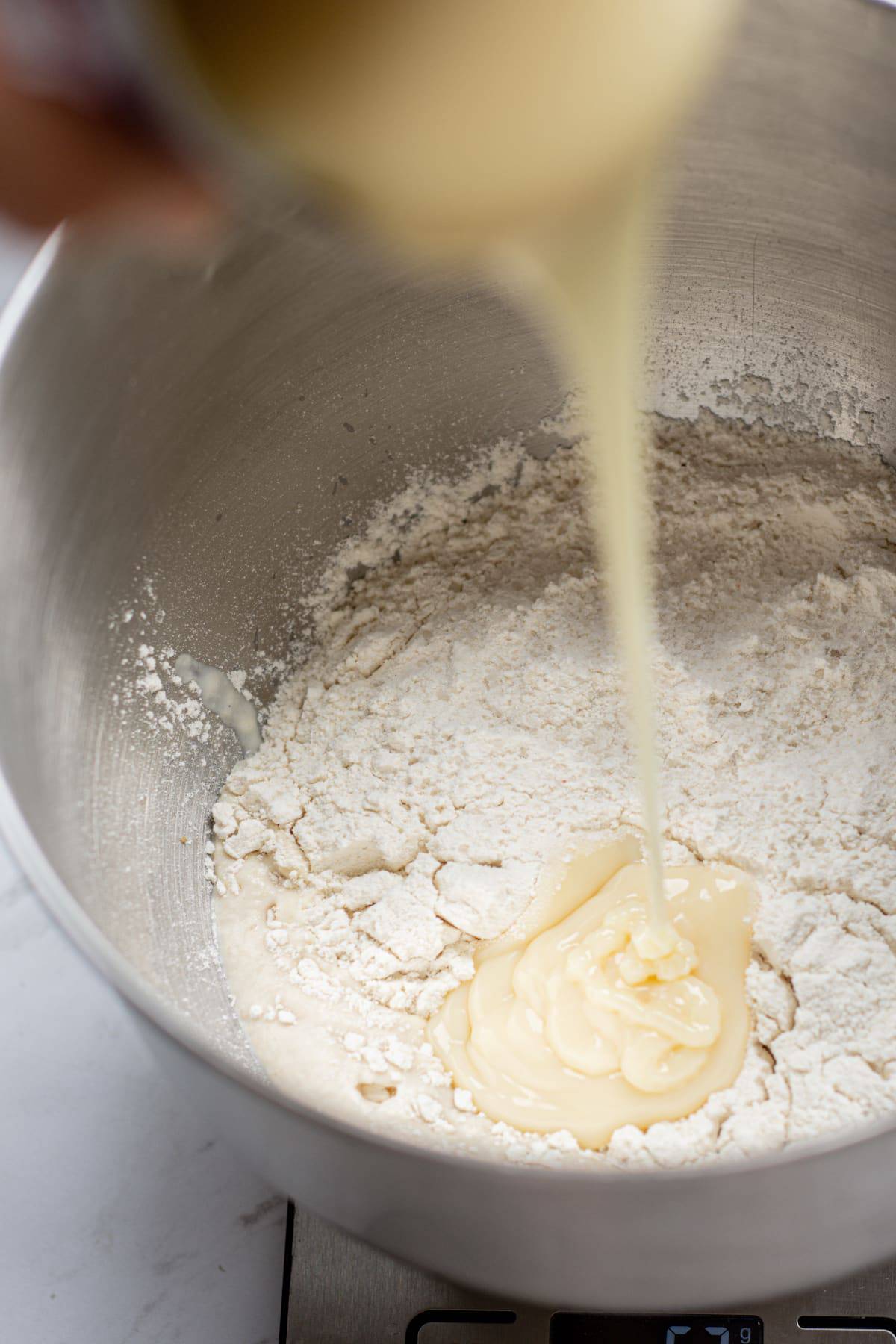
Adding this to bread dough brings fat and moisture to the bread and it helps to keep the bread tender and soft. Since a lot of the water has already been removed from the condensed milk, it’s a way to add a concentrated amount to the dough without adding too much liquid.
This condensed milk bread recipe has similarities to a type of bread called Japanese Hokkaido milk bread. However, that bread is made fluffy through the use of ‘Tangzhong’.
This is a cooked mixture of milk and flour which gelatinizes and helps keep moisture in the bread. This recipe is made without a Tangzhong. The addition of condensed milk is what brings moisture to this recipe.
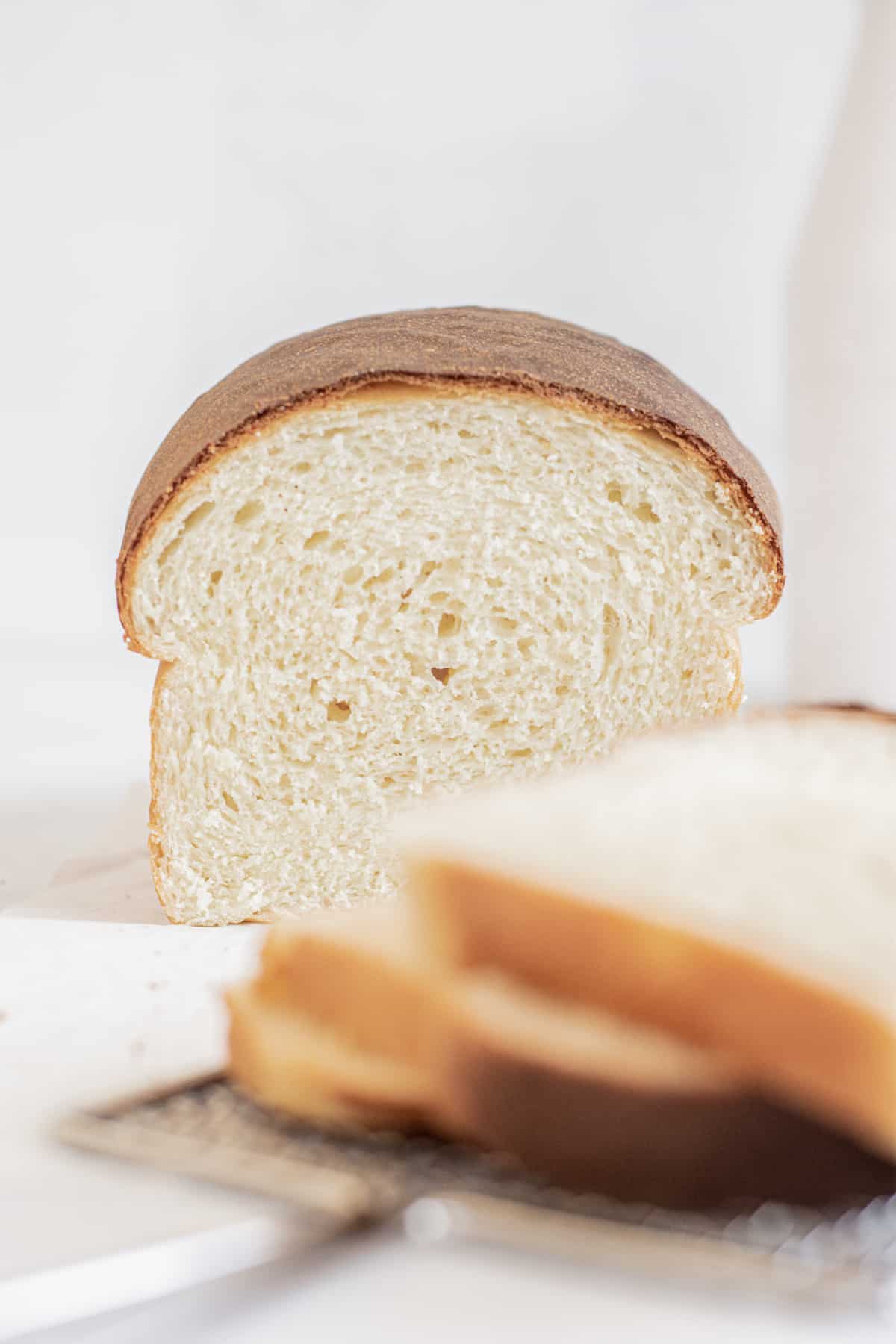
The ingredients
The ingredient amounts for this sweet bread are listed in the recipe card below, but here is a rundown. This condensed milk bread doesn’t contain eggs and so it can be made vegan if you substitute the milk and butter parts with the vegan equivalents.
In this condensed milk bread recipe you will find –
- A strong all-purpose flour with a protein level of at least 11%. You can use bread flour too, but this will make a chewier bread.
- Yeast. Active dry yeast or instant yeast. The yeast used in this recipe can be instant yeast or active dried yeast. Instant yeast will rise faster than active dried yeast. Whichever one you use, it needs to be viable. Usually, the instant yeast sachets are pretty full-proof, but sometimes active dried yeast can lose viability.
- Sugar – just a teaspoon to help activate the yeast. The rest of the sweetness comes from condensed milk.
- Milk. This can be regular whole milk or your favorite dairy-free option.
- Condensed milk – This can be regular condensed milk, or use your favorite dairy-free version.
- Salt
- Butter – The same as above, it can be regular butter unsalted butter or a dairy-free version. There’s not much butter added, but enough to bring some richness to the bread.
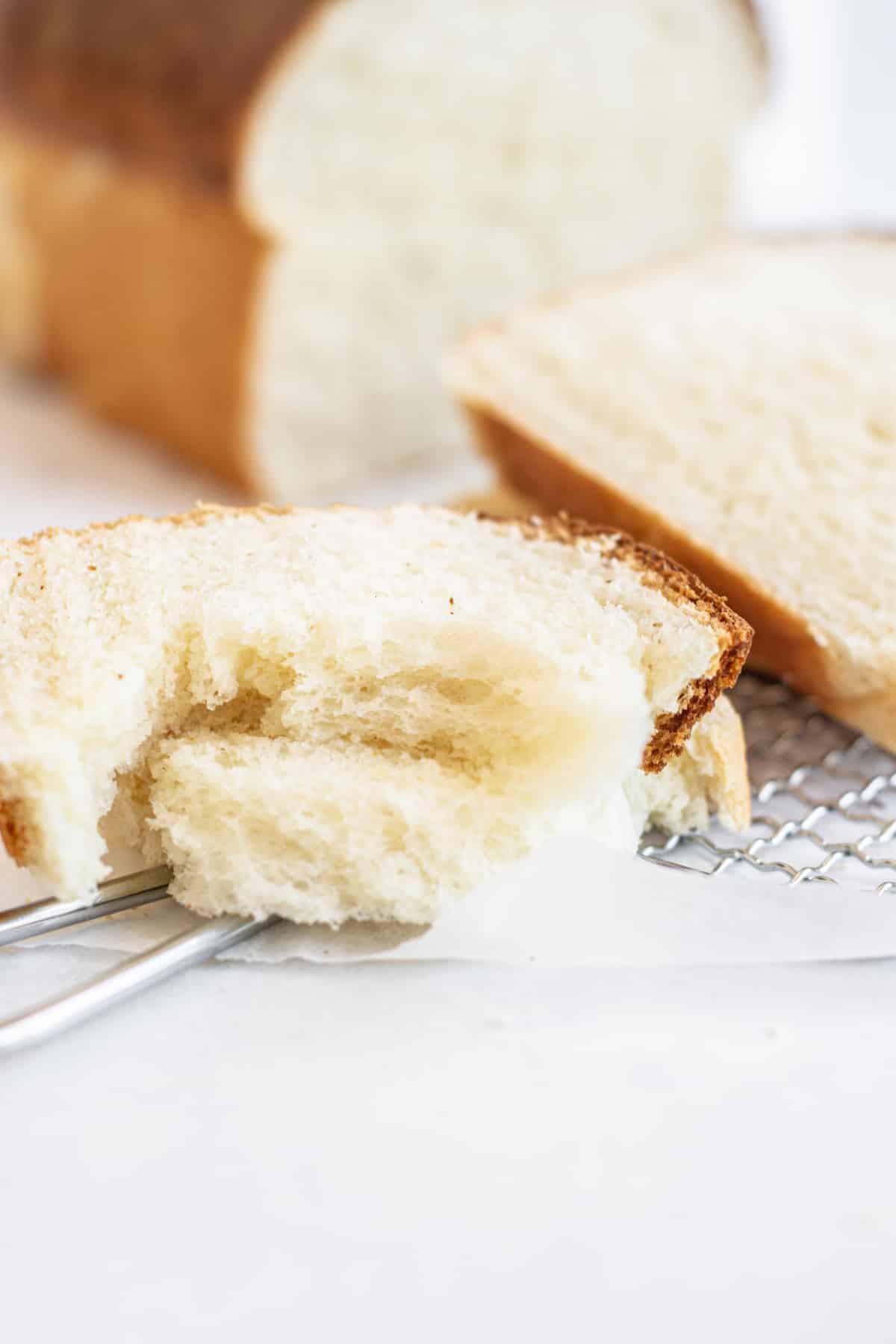
Baker’s schedule
Here is an idea of the baker’s schedule for this homemade bread. The timings can be adjusted to suit your schedule.
- 9 am – Mix the yeast, sugar, and warm milk. Let it stand until foamy.
- 9:10 am – Add in the flour, condensed milk, and salt. Knead, add in butter and knead for 10-15 minutes. Form into a smooth ball.
- 9:25 am – Place dough in a greased bowl and let the dough rise until doubled.
- 10:30 am – Roll dough into a rectangle. Roll it up like a spiral. Place in a bread pan and rise until doubled.
- 11:45 – Brush the top with milk and bake for around 25 minutes.
Step by step instructions
The dough
Add the yeast and sugar to a large mixing bowl or the bowl of a stand mixer. Warm the milk (not the condensed milk) to around 95-104°F / 35-40°C and pour this over the yeast and sugar. If using active dry yeast, let this sit for around 5-10 minutes until it becomes foamy. If using instant yeast this step can be skipped.
Add in the flour, salt, and condensed milk. Fit the stand mixer with a dough hook and mix to form a thick dough. Add in the softened butter, a few cubes at a time, and keep mixing for around 10 minutes until the soft dough is smooth and strong.

Mixing by hand
Alternatively, use your hands to knead the dough. Once it forms a dough ball, pull it onto a floured surface and knead in the butter, a few cubes at a time. Knead by hand for around 10 minutes until the dough is smooth and strong. If you need a break, take it. The dough responds well to resting time.
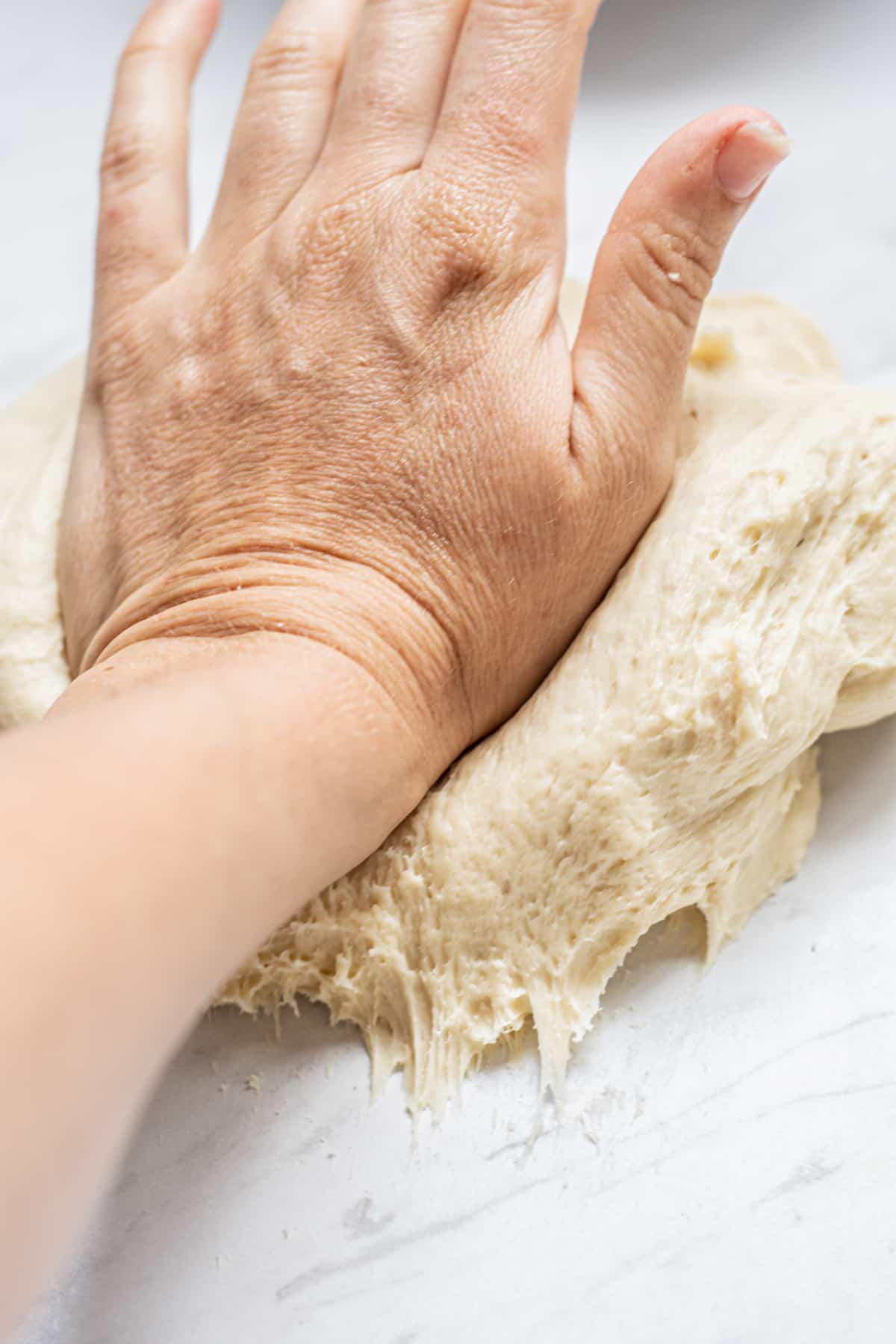
First rise
Once kneaded, form the dough into a dough ball. Transfer the smooth dough seam side down to a greased large bowl and cover with compostable plastic wrap, beeswax wrap, or a damp tea towel. Let it rise in a warm place until doubled in size, around about 1 hour. The exact proofing time will depend on your room temperature.
Line a standard 8½x4½inch (21x11cm) loaf pan with parchment paper.
Second rise
Once doubled, punch the dough down and pull the dough from the bowl onto a lightly floured surface. Use a rolling pin to roll the dough into a rectangle that’s as almost wide as the length of the bread pan. Roll the rectangle up into a spiral and place it in the loaf pan.
Cover the dough with a clean kitchen towel and let the bread undergo its second rise until doubled.
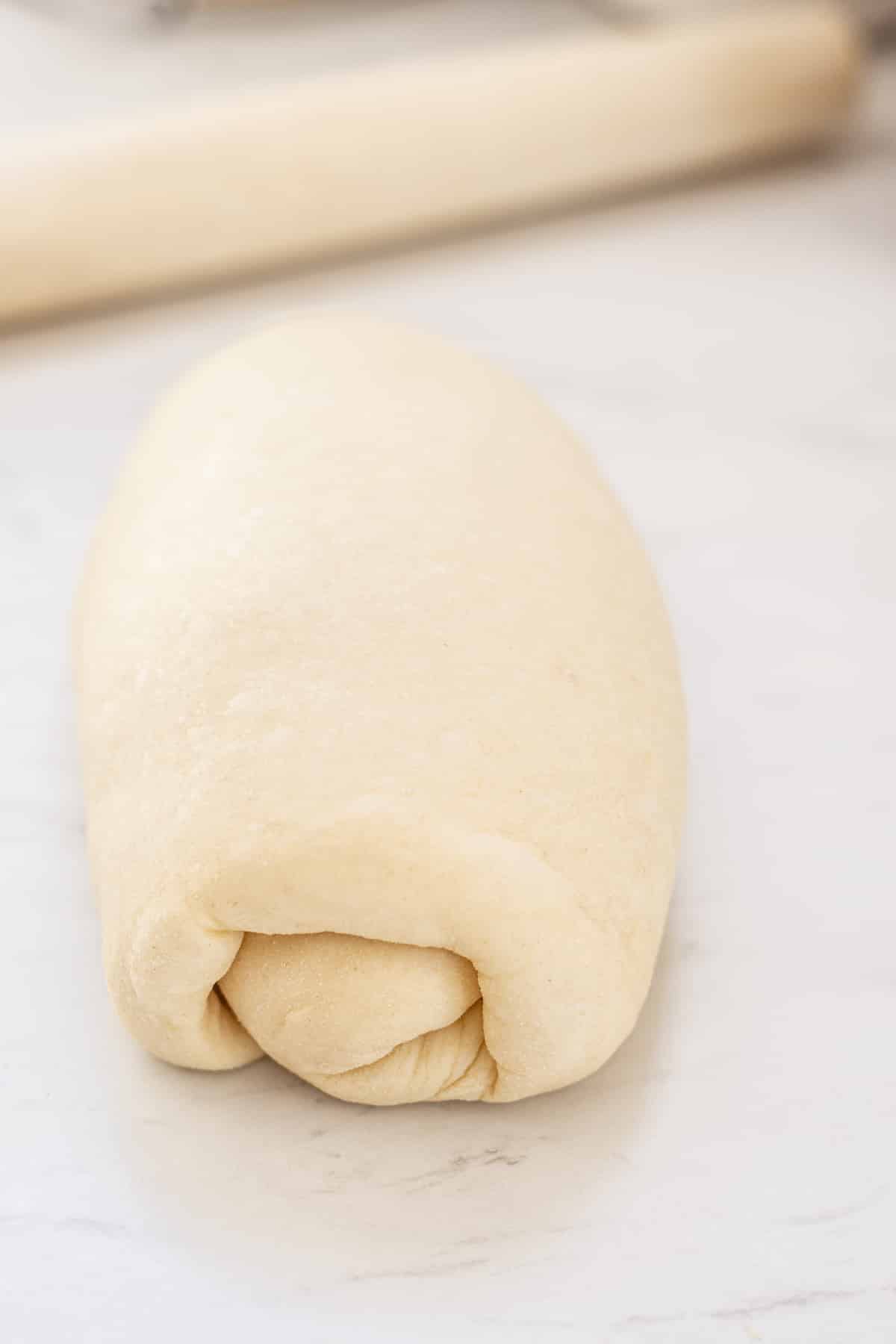
Heat the oven to 365°F/185°C regular oven.
Once the oven is at temperature and the bread has risen, you can use a pastry brush to brush the top of the loaf with milk if you like a shiny top.
Bake the bread for around 25 minutes. Check the bread after 15 minutes of baking and if the top is too deep brown, cover it closely with aluminum foil and continue baking. Once baked, remove the bread from the tin and let it cool on a wire rack.
Storing
This bread stores well covered at room temperature for up to 3 days. Alternatively, it can be covered tightly and frozen for up to three months.

Additions and substitutions
- The milk products in the recipe can be swapped for their dairy-free equivalents. Use your favorite plant-based milk, plant-based condensed milk, and butter.
- Add in extra flavors like ground cinnamon, orange zest, or chocolate chips!
- The bread can be glazed at the end of baking with a condensed milk glaze or simply melted butter. To make the sweet glaze, in a small bowl mix 1 tablespoon of condensed milk with 1 tablespoon of very soft butter. Whisk that together and brush the top of the warm bread with it.
- Fill the dough with cinnamon sugar and make cinnamon rolls.
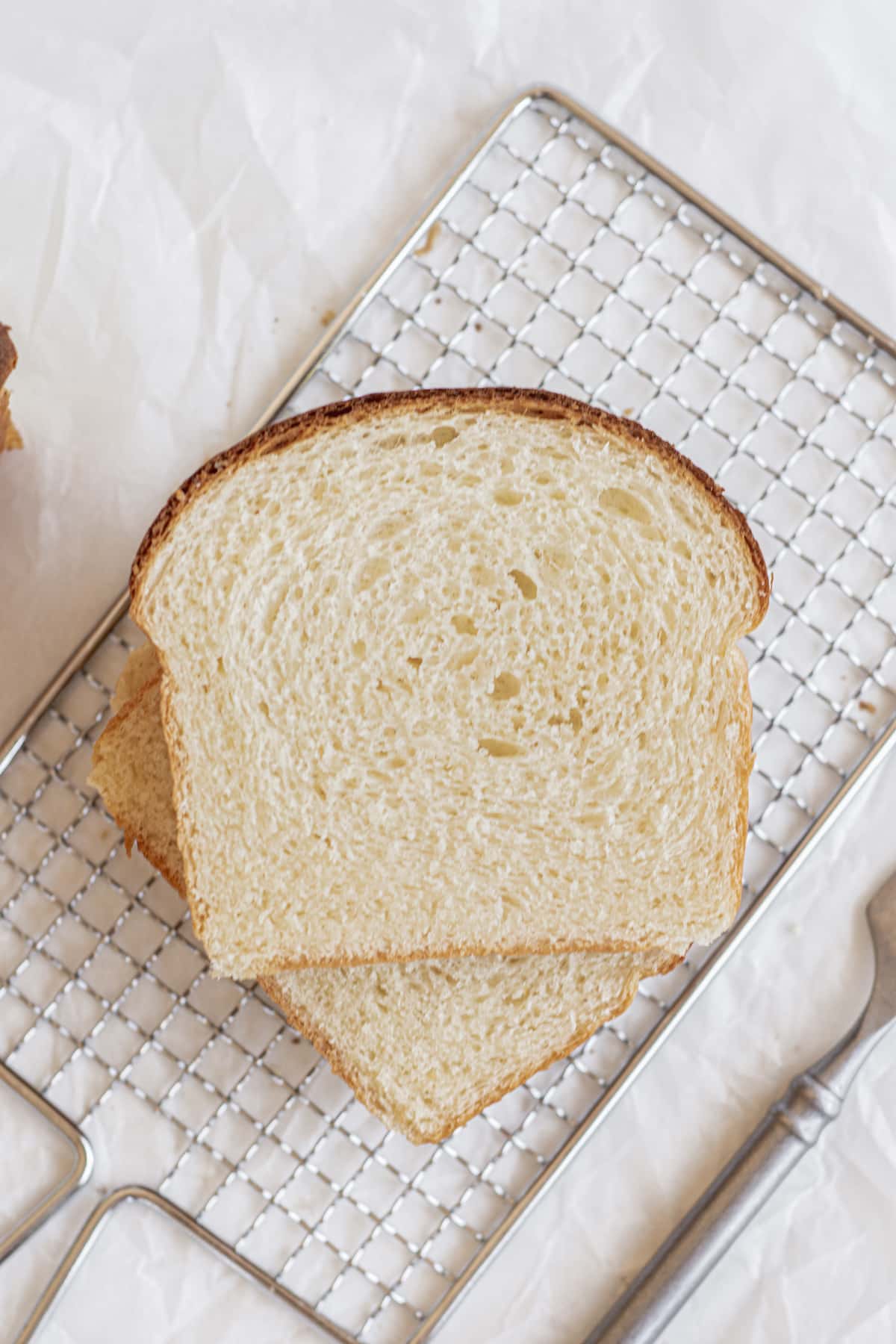
This recipe is written using grams as the main measurement.
If you don’t have a scale US* cup equivalents are also included, however, using a kitchen scale to measure grams will give the best and most consistent results.*US cup sizes are smaller than metric cup sizes.
Related recipes
For more bread recipes, check out these!
- Cheesy pesto bread
- Easy cheese scones
- Brown butter banana bread
- Sun dried tomato focaccia
- Garlic bread bites
- Overnight bagel recipe

Condensed Milk Bread
This condensed milk bread recipe is so easy to make. The bread is sweet, light, and fluffy.
Ingredients
Dough
- 165g lukewarm milk (2/3 cup + ½ Tablespoon)
- 1 ½ teaspoon instant yeast or active dry yeast
- 1 teaspoon granulated sugar
- 275g strong all-purpose flour with a protein level of at least 11% (2 cups + 2 Tablespoons)
- 60g sweetened condensed milk (3 Tablespoons)
- ½ teaspoon salt
- 45g butter (3 Tablespoons), softened to room temperature
Brushing
- 1-2 Tablespoons milk
Instructions
Dough
- Add the yeast and sugar to a large mixing bowl or the bowl of a stand mixer. Warm the milk to around 95-104°F / 35-40°C (but not hotter) and pour this over the yeast and sugar. If using active dry yeast, let this sit for around 5-10 minutes until it becomes foamy. If using instant yeast this step can be skipped.
- Add in the flour, salt, and condensed milk. Fit the stand mixer with a dough hook and mix to form a thick dough. Add in the softened butter, a few cubes at a time, and keep mixing for around 10 minutes until the soft dough is smooth and strong.
Mixing by hand
First rise
- Once kneaded, form the dough into a dough ball. Transfer the smooth dough seam side down to a greased large bowl and cover with compostable plastic wrap, beeswax wrap, or a damp tea towel. Let it rise in a warm place until doubled in size, around about 1 hour. The exact proofing time will depend on your room temperature.
- Line a standard 8 ½ x4 ½ inch (21x11cm) loaf pan with parchment paper.
Second rise
- Once doubled, punch the dough down and pull the dough from the bowl onto a lightly floured surface. Use a rolling pin to roll the dough into a rectangle that's as almost wide as the length of the bread pan. Roll the rectangle up into a spiral and place it in the loaf pan.
- Cover the dough with a clean kitchen towel and let the bread undergo its second rise until doubled.
Baking
- Heat the oven to 365°F/185°C regular oven.
- Once the oven is at temperature and the bread has risen, use a pastry brush to brush the top of the loaf with milk.
- Bake the bread for around 25 minutes. Check the bread after 15 minutes of baking and if the top is too deep brown, cover it closely with aluminium foil and continue baking.
- Once baked remove it from the tin and let it cool to room temperature before slicing.
Notes
*The cup sizes are US size which is smaller than metric. For best results, use scales.
This bread stores well covered at room temperature for up to 3 days. Alternatively, it can be covered tightly and frozen for up to three months.
Recommended Products
As an Amazon Associate and member of other affiliate programs, I earn from qualifying purchases.
Nutrition Information:
Yield: 10 Serving Size: 1 sliceAmount Per Serving: Calories: 181Total Fat: 5gSaturated Fat: 3gTrans Fat: 0gUnsaturated Fat: 2gCholesterol: 15mgSodium: 161mgCarbohydrates: 26gFiber: 1gSugar: 5gProtein: 7g


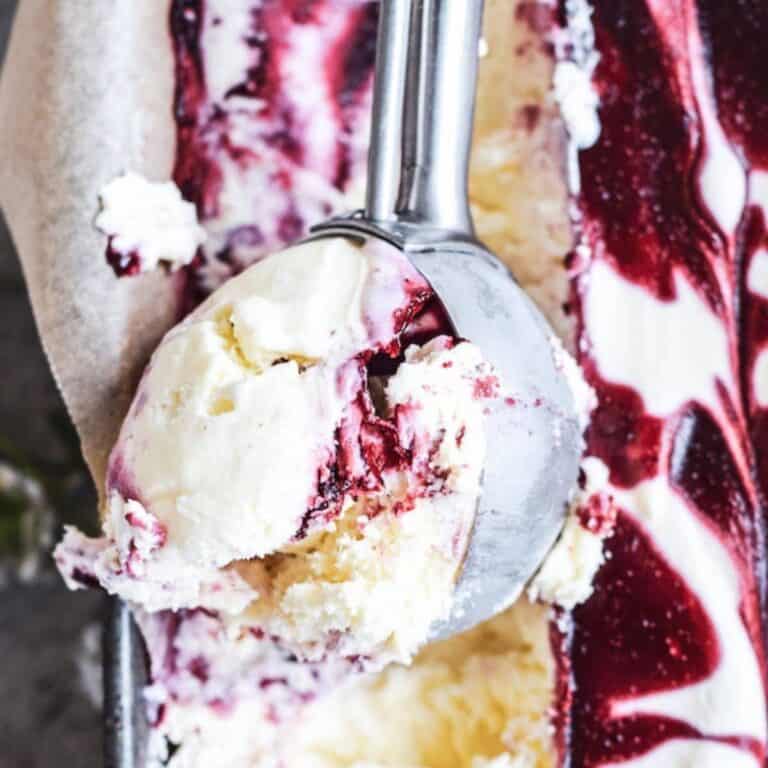

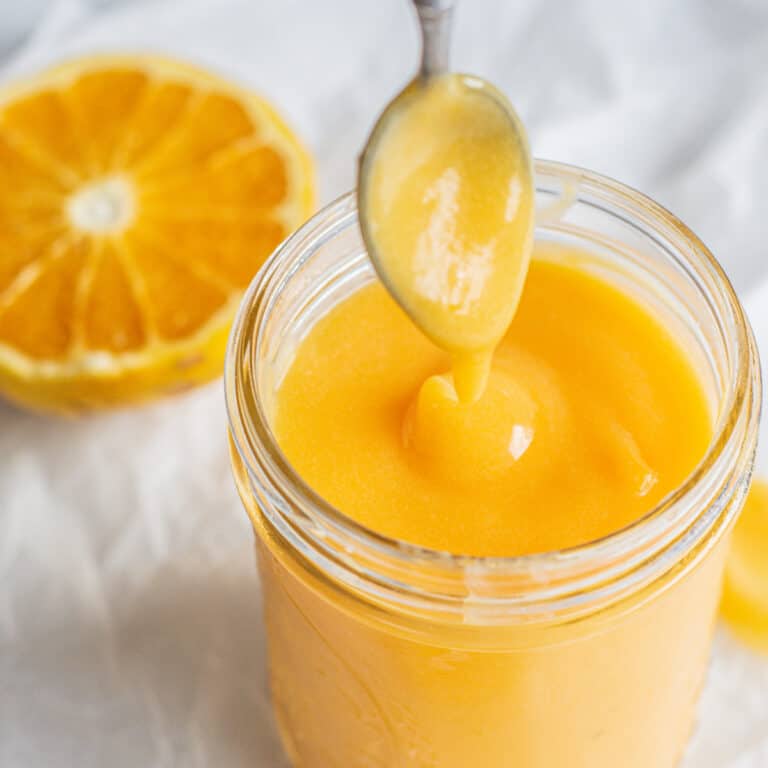

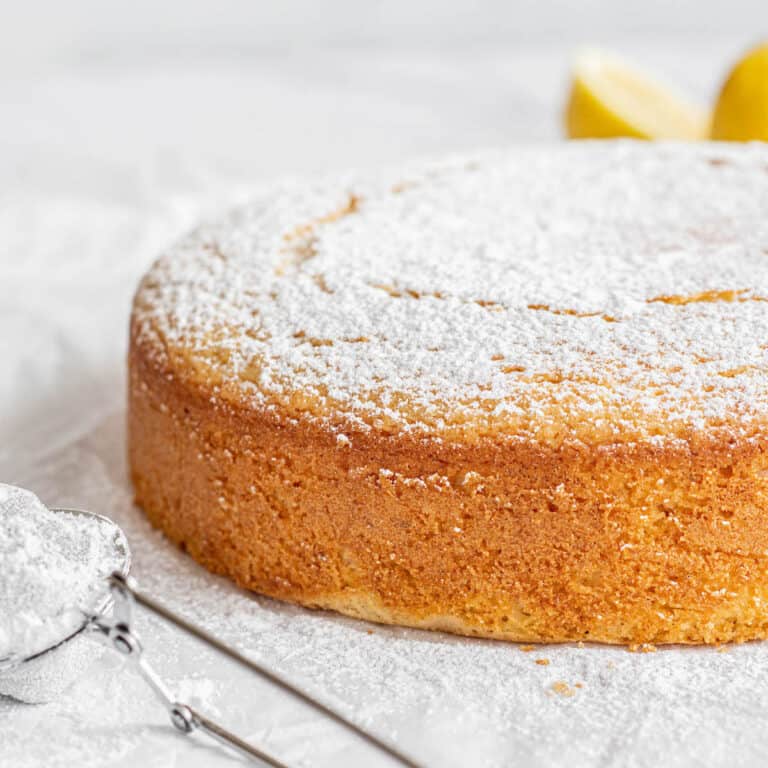
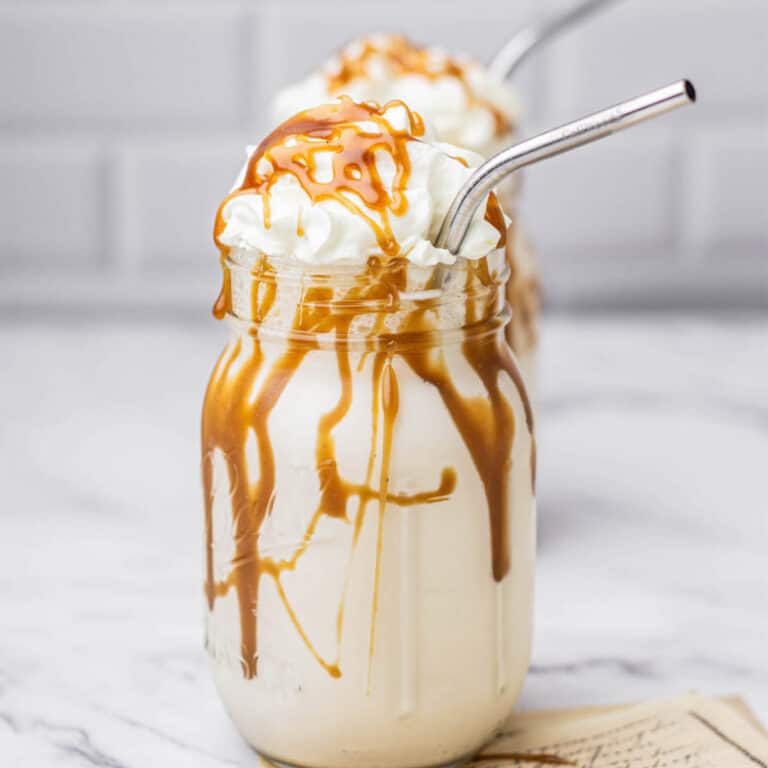
This bread sounds yummy,I do not eat white bread,can I substitute rye,whole wheat or any other?
Hey Gloria, substituting the white for those flours won’t result in a light and fluffy bread, unfortunately.
Hi Elien. This sounds delicious and while I’m new to breadmaking, I’m looking for a variety of goodies to bake and this is most definitely one of them. Just one question regarding the yeast. I use the instant yeast in the little sachets, they are 10 g. I think it’s 2 1/4 tsp. Can I use the entire sachet? Thanks
Hey Ruth, yes you can 🙂
Can you let it knead abd first rise in a breadmachine, then second rise and bake in the oven?
Yes you can 🙂